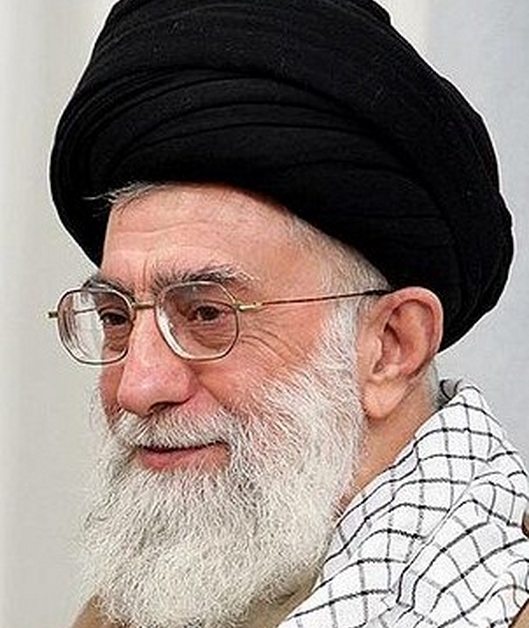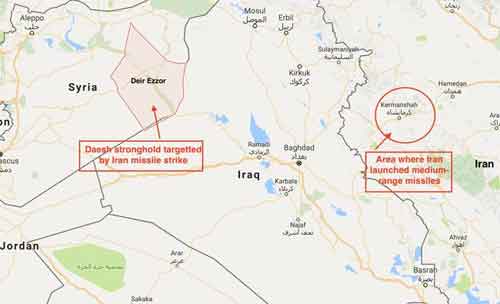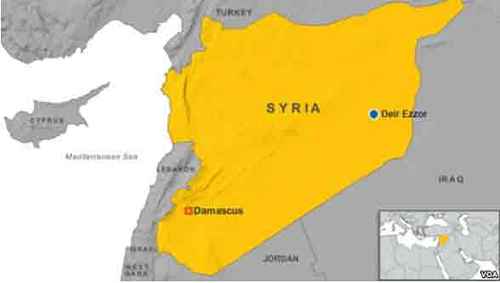
PENTAGON — U.S. forces in Iraq and Syria have been attacked with drones or rockets at least 27 times in recent days, as more U.S. forces deploy to the region, Pentagon press secretary Brigadier General Pat Ryder said Tuesday.
At least seven of these attacks were launched after U.S. forces in the early morning hours of Friday struck two facilities in eastern Syria used by Iran’s Islamic Revolutionary Guard Corps and affiliated groups.
The U.S. strikes were in response to earlier attacks on U.S. forces and were “narrowly tailored … to protect and defend U.S. personnel in Iraq and Syria,” Secretary of Defense Lloyd Austin said in a statement.
None of the attacks carried out since the U.S. retaliatory strikes on Friday has caused casualties or damage, according to defense officials.
The latest attack occurred Monday and used multiple one-way attack drones to target al-Asad Air Base in western Iraq, said a defense official who spoke to VOA on condition of anonymity due to security sensitivities.
Multiple rockets were used in another attack on al-Asad on Monday, and rockets targeted U.S. and coalition forces at two locations in eastern Syria as well, one at a base known as Green Village and another at Mission Support Site Euphrates.
On Sunday, a one-way attack drone was used against U.S. forces at a base near al-Shaddadi, according to U.S. officials.
Ryder said the Pentagon was deploying 300 more troops to the Middle East region “to support regional deterrence efforts and further bolster U.S. force protection capabilities.”
“They aren’t going to Israel,” Ryder said.
Ryder and other officials have blamed Iranian-backed proxies for the near daily attacks on U.S. forces.
“We know that these are Iranian-backed militia groups that are supported by Iran and, of course, we hold Iran responsible for these groups,” Ryder said last week.
Austin told members of Congress on Tuesday that the United States maintains the right to respond at a time and place it chooses.
“If this doesn’t stop, then we will respond.” Austin said.
Asked by VOA whether the recent attacks are a sign that U.S. deterrence is not working, a senior defense official said earlier this week that “Iran’s objective for a long time has been to force a withdrawal of the U.S. military from the region. What I would observe is that we’re still there.”
US strikes back in Syria
One American F-15 and two American F-16 fighter jets used precision munitions against a weapons storage facility and an ammunition facility near Abu Kamal early Friday local time, according to defense officials. The Pentagon assesses the strikes successfully hit their targets, and it is still looking into casualty numbers.
“These precision self-defense strikes are a response to a series of ongoing and mostly unsuccessful attacks against U.S. personnel in Iraq and Syria by Iranian-backed militia groups that began on Oct. 17,” Austin said in a statement.
“The United States will not tolerate such attacks and will defend itself, its personnel, and its interests,” he added.
Officials have raised concerns about the prospect of “more significant escalation” in the region from Iranian proxy groups.
“Spillover into Syria is not just a risk; it has already begun,” Geir Pedersen, U.N. special envoy for Syria, said on Monday.
The attacks since Oct. 17 on U.S. and coalition forces have resulted in 17 minor injuries to Americans in Syria and four minor injuries to American personnel in Iraq, with U.S. officials continuing to monitor any potential traumatic brain injuries.
One U.S. contractor at al-Asad Air Base in Iraq suffered a cardiac episode while sheltering in place during a false alarm for an air attack and died.
At least 20 attacks on U.S. forces in Iraq and Syria occurred between Oct. 17 and Oct. 26, according to the Pentagon.
US increasing protection in region
Approximately 1,200 troops have either deployed or are in the process of deploying from the United States to the Middle East to increase force protection. These units include a Terminal High Altitude Area Defense, or THAAD, battery from Fort Bliss, Patriot batteries from Fort Sill, and Patriot and Avenger batteries from Fort Liberty.
Austin placed more than 2,000 military personnel on heightened alert earlier this month with a prepare-to-deploy order.
VOA’s Margaret Besheer contributed to this report from the United Nations.
[content id=”52927″][content id=”79272″]








